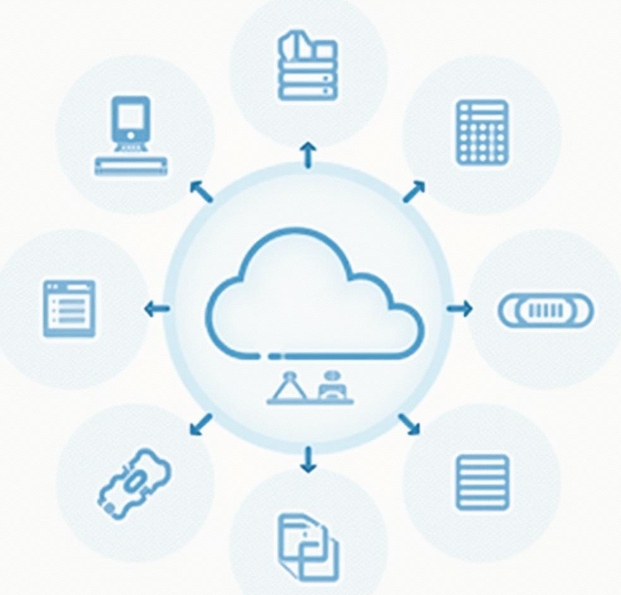The Development Journey of Cloud Computing: From Infrastructure to the Era of Intelligent Cloud
- latest articles
- 1.DApp Development & Customization: Merging Diverse Market Needs with User Experience 2.Analysis of the Core Technical System in DApp Project Development 3.How to achieve cross-chain interoperability in Web3 projects? 4.How does the tokenization of points reconstruct the e-commerce ecosystem? 5.How to Set and Track Data Metrics for a Points Mall? 6.What is DApp Development? Core Concepts and Technical Analysis 7.Inventory of commonly used Web3 development tools and usage tips 8.Development of a Distribution System Integrated with Social E-commerce 9.Six Key Steps for Businesses to Build a Points Mall System 10.What is DApp Development? A Comprehensive Guide from Concept to Implementation
- Popular Articles
- 1.Future Trends and Technology Predictions for APP Development in 2025 2.Analysis of the DeFi Ecosystem: How Developers Can Participate in Decentralized Finance Innovation 3.From Zero to One: How PI Mall Revolutionizes the Traditional E-commerce Model 4.DAPP Development | Best Practices for Professional Customization and Rapid Launch 5.Recommended by the Web3 developer community: the most noteworthy forums and resources 6.From Cloud Computing to Computing Power Leasing: Building a Flexible and Scalable Computing Resource Platform 7.How to Develop a Successful Douyin Mini Program: Technical Architecture and Best Practices 8.Shared Bike System APP: The Convenient Choice in the Era of Smart Travel 9.How to Create a Successful Dating App: From Needs Analysis to User Experience Design 10.From Design to Development: The Complete Process of Bringing an APP Idea to Life
With the rapid development of information technology, cloud computing has gradually become a key force driving innovation and development in modern society. From the initial Infrastructure as a Service (IaaS) to the current era of intelligent cloud, the evolution of cloud computing has not only brought unprecedented convenience to enterprises but has also significantly transformed the way people work and live. This article will review the development history of cloud computing, explore its evolution from infrastructure to the intelligent cloud era, and analyze the current challenges and future trends facing cloud computing.
I. The Origin of Cloud Computing and the Infrastructure Era
The concept of cloud computing can be traced back to the computer era of the 1960s, when computer scientists like John McCarthy proposed the idea that "computers would exist as a public utility." However, it wasn't until the early 21st century, with the widespread adoption of the internet and the rapid advancement of computer technology, that cloud computing truly began to materialize.
Around the year 2000, Infrastructure as a Service (IaaS) began to take shape. Businesses and individuals no longer needed to purchase expensive hardware or maintain equipment; instead, they could rent remote servers and storage resources over the internet. One of the landmark events of this transformation was the launch of Amazon Web Services (AWS) in 2006, which provided global users with flexible computing, storage, and networking services. During this period, cloud computing primarily focused on providing infrastructure, allowing enterprises to purchase computing resources on demand and eliminating the high costs associated with building and maintaining data centers.

II. The Evolution of Cloud Computing: From IaaS to PaaS and SaaS
As cloud computing continued to develop, its range of services gradually expanded, covering different levels of service. Building on Infrastructure as a Service (IaaS), Platform as a Service (PaaS) and Software as a Service (SaaS) emerged.
Platform as a Service (PaaS)
The emergence of PaaS provided developers with an integrated development and deployment environment. Unlike IaaS, PaaS not only offered computing and storage resources but also included platform functionalities such as development tools, database management, and application hosting. PaaS allowed developers to focus on application development without worrying about managing underlying hardware resources and operating systems. For example, Google App Engine and Microsoft Azure are typical representatives of PaaS, offering a complete development platform to help enterprises improve the efficiency of application development.
Software as a Service (SaaS)
As cloud computing technology matured, SaaS gradually became one of the most popular forms of cloud services. SaaS provides cloud-hosted application software services, allowing users to directly use applications over the internet without purchasing software licenses or performing installation and configuration. For instance, services like Google Workspace, Salesforce, and Dropbox fall under SaaS. The popularity of SaaS has enabled small and medium-sized enterprises to undergo digital transformation quickly without bearing high software and hardware costs.
During this stage, the application scenarios of cloud computing gradually expanded beyond computing resources and storage services, with more intelligent services emerging, promoting comprehensive deployment of enterprises on cloud computing platforms.

III. The Arrival of the Intelligent Cloud Era
With the rise of technologies such as artificial intelligence (AI), big data, and the Internet of Things (IoT), cloud computing has gradually entered the intelligent cloud era. In this stage, cloud computing not only provides infrastructure and application platforms but has also become a key engine for enterprise intelligent transformation. The characteristics of the intelligent cloud era are mainly reflected in the following aspects:
Deep Integration of Big Data and Artificial Intelligence
Big data and artificial intelligence are the core technologies of the intelligent cloud era. Through cloud computing platforms, enterprises can analyze massive amounts of data to uncover potential business value. At the same time, cloud computing platforms provide powerful computing capabilities for training and inference of AI algorithms. Many enterprises deploy AI applications on cloud computing platforms to achieve functions such as automated decision-making, intelligent recommendations, and precision marketing.
Integration of Edge Computing and the Internet of Things
With the proliferation of IoT devices, edge computing has become a new trend in the development of cloud computing. Edge computing reduces latency and improves data processing speed by moving computation and data storage closer to the devices. Combined with cloud computing, edge computing enables IoT devices to process data in real time and collaborate with the cloud. This model has been widely applied in areas such as smart homes and smart manufacturing.
Automation and Serverless Architecture
In the intelligent cloud era, automation and serverless architecture have become important means to enhance the efficiency of cloud computing. Serverless computing allows developers to focus on application logic development without worrying about server management and maintenance. Automation, through cloud platforms, achieves full-process automation in application deployment, monitoring, and updates, significantly improving enterprises' operational efficiency.
IV. Security and Privacy Challenges in Cloud Computing
Although cloud computing has brought many benefits to enterprises and users, security and privacy issues remain a focal point of concern. As more sensitive data is stored in the cloud, ensuring data security and privacy has become a major challenge for cloud computing.
Data Breaches and Attacks
The shared resources and multi-tenant architecture of cloud computing may pose risks of data breaches. Although cloud service providers typically implement multi-layered security measures, users still need to pay attention to issues such as data encryption, identity authentication, and access control to ensure data security.
Compliance and Regulation
Different countries and regions have varying legal requirements for data privacy. Enterprises using cloud computing services need to comply with local laws and regulatory requirements. This is particularly important for multinational corporations, as deploying cloud computing services in different countries may require adherence to different compliance standards.
Service Availability and Disaster Recovery
The stability and availability of cloud computing services are essential prerequisites for enterprises relying on cloud platforms. Service interruptions can lead to business stagnation or even data loss, so enterprises need to establish effective disaster recovery and data backup mechanisms to ensure the reliability of cloud computing platforms.
V. Future Trends in Cloud Computing
Entering the intelligent cloud era, the development speed of cloud computing will further accelerate. The following trends are worth noting:
Multi-Cloud and Hybrid Cloud Architectures
As enterprises' demands for flexibility and reliability continue to increase, more and more companies are opting for multi-cloud and hybrid cloud architectures. This architecture allows enterprises to schedule resources and migrate data across multiple cloud platforms, avoiding dependence on a single cloud service provider.
Integration of Quantum Computing and Cloud Computing
As a major breakthrough in future computing, quantum computing is expected to play a significant role in cloud computing. Through cloud computing platforms, enterprises can achieve on-demand access to quantum computing resources, thereby accelerating the adoption and application of quantum computing technology.
The Rise of Cloud-Native Technologies
Cloud-native technology refers to a method of building and running applications in a cloud environment, emphasizing concepts such as microservices architecture, containerized deployment, and continuous delivery. As cloud-native technologies mature, enterprises can develop, deploy, and manage applications more efficiently.
Conclusion
From the initial Infrastructure as a Service (IaaS) to the current intelligent cloud era, cloud computing has undergone a rapid evolution. With the integration of technologies such as big data, artificial intelligence, and the Internet of Things, cloud computing is becoming a vital force driving enterprise intelligent transformation and innovation. Although security and privacy issues in cloud computing still require attention, its future potential and development trends undoubtedly bring limitless opportunities to industries worldwide. Looking ahead, cloud computing will continue to innovate, constantly advancing technological progress and societal development.
-

Applications and Challenges of Cloud Computing in the Internet of Things (IoT)
With the continuous advancement of information technology, cloud computing and t···
-

Integration of Cloud Computing and Artificial Intelligence: Enhancing Intelligent Applications
With the rapid advancement of technology, cloud computing and artificial intelli···
-

Data Security and Privacy Protection in Cloud Computing Applications
With the continuous advancement of information technology and the rapid developm···

 Blockchain
Blockchain










